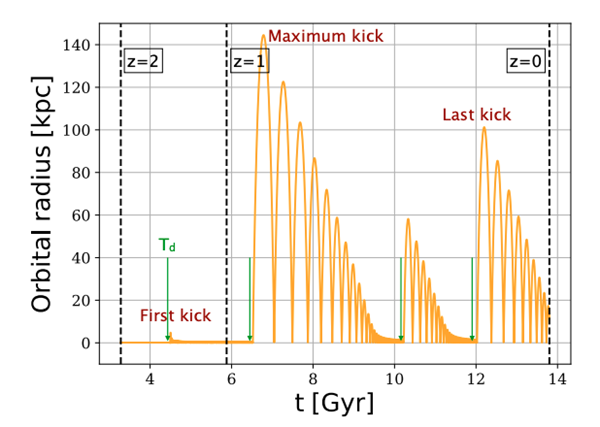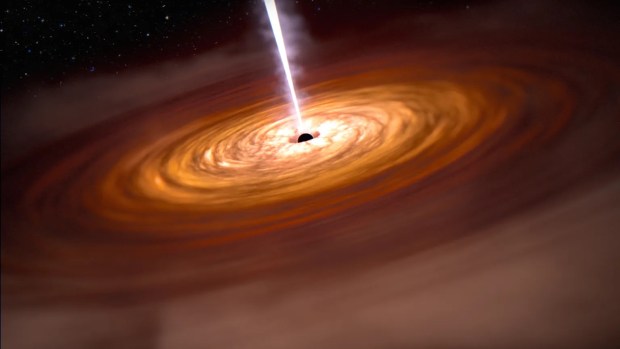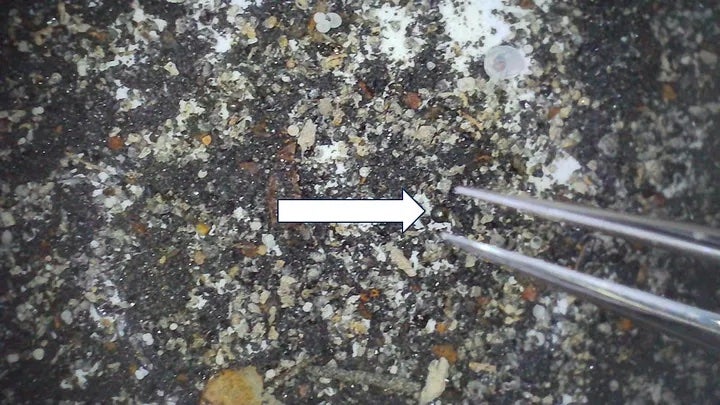The largest black holes in the universe can have masses hundreds of millions of times that of the Sun. So, it understandably takes a lot of force to move one of those things.
Nonetheless, new research reveals that it’s surprisingly common for supermassive black holes to be flung far from the centers of their host galaxies. In fact, according to a preprint of the new study on arXiv.org, it seems that up to one-third of the biggest black holes get pushed around like this.
Black holes and their host galaxies: A complicated relationship
Observations suggest that almost every galaxy in the universe hosts its own giant black hole, which are called, appropriately enough, supermassive black holes. Even our own Milky Way galaxy has one of its known, Sagittarius A*, which sits about 26,000 light-years away and holds a mass of some 4 million Suns. These monsters are by far the largest objects in their host galaxies.
While supermassive black holes don’t largely affect the rest of the galaxy directly through their gravity (even the biggest black holes weigh less than 1 percent of their host galaxy), they can influence the overall temperature and rate of star formation of their galaxy. That’s because supermassive black holes are capable of devouring enormous amounts of material and ejecting heat and energy back into their surrounding galaxy.
Researchers have long believed that there’s an intimate connection between galaxies and their supermassive black holes, since they tend to follow a proportional relationship in their mass: The bigger the galaxy, the bigger the black hole. And so the largest supermassive black holes belong to the largest galaxies, which tend to be found in the centers of enormous clusters of galaxies.
These giant galaxies, known as brightest cluster galaxies (BCGs), evolve through the merger and subsequent cannibalization of many smaller galaxies throughout their lifetime. Because they sit at the center of clusters, BCGs often interact with other members of the galaxy cluster that happen to swing by. And if those other galaxies come too close, they are absorbed into the larger BCG.
Those cannibalized galaxies carry along with them their own supermassive black holes. And after merging, the smaller galaxy’s black hole eventually finds its way down to the center of the BCG and merges with the already monstrous black hole there. In fact, this kind of merging process helps explain why both the BCGs and their supermassive black holes can reach such astronomical sizes.
But not all galaxy and black hole mergers go smoothly.
Repeated galaxy collisions give black holes a kick
A team of astrophysicists at the Sorbonne University in Paris used state-of-the-art simulations of galaxy formation combined with simple models of black hole interactions to find out what happens when galaxies repeated collide with BCGs.
The team found that, occasionally, the infalling galaxy is capable of completely disrupting the supermassive black hole at the center of the BCG. That’s because, if the interloping galaxy is massive enough and makes a beeline right for the center, it can get stuck orbiting within the core region of the BCG before it completely merges.
As its in the process of merging, the swallowed remnant galaxy wreaks havoc, with continued gravitational interactions raising the energies of everything in the BCG’s core, including the supermassive black hole that resides there. In some cases, the researchers found, these interactions “kicked” the black hole out as much as hundreds of thousands of light-years from the core — outside the BCG itself!
These kinds of unlucky interactions are relatively rare, but the life of a BCG is nothing but merger after merger, so over the course of billions of years, it’s quite common for a BCG’s central black hole to become dislodged at some point.
Most of the time, the black hole makes its way back down to the core where it can finally rest. But the researchers found that a third of all BCGs currently have displaced supermassive black holes in the present era, with some of those black holes not expected to return to their homes for another 6 billion years.
Supermassive black holes: An inconsistent role
This new work may hold important consequences for future research into the relationship between supermassive black holes and their host galaxies. Most models of galaxy formation today include the effects of feedback from giant black holes, where the black holes consume raw gas and occasionally spit radiation back out into their galaxies. But those models assume that the supermassive black holes stay at the cores of their host galaxies for billions of years straight.
But if a black hole gets kicked away from its galactic core, it may find itself in a much less dense environment. Without new material to reliably consume, the black hole can’t fuel the cosmic engine that usually floods its host galaxy with radiation. The entire feedback cycle largely shuts down.
It remains to be seen how much of an impact these new results have. But future simulations will incorporate the fact that many black holes might spend a significant amount of time away from the centers of their host galaxies. And those results could help shed light on the complex relationship that exists between galaxies and their supermassive black holes.











